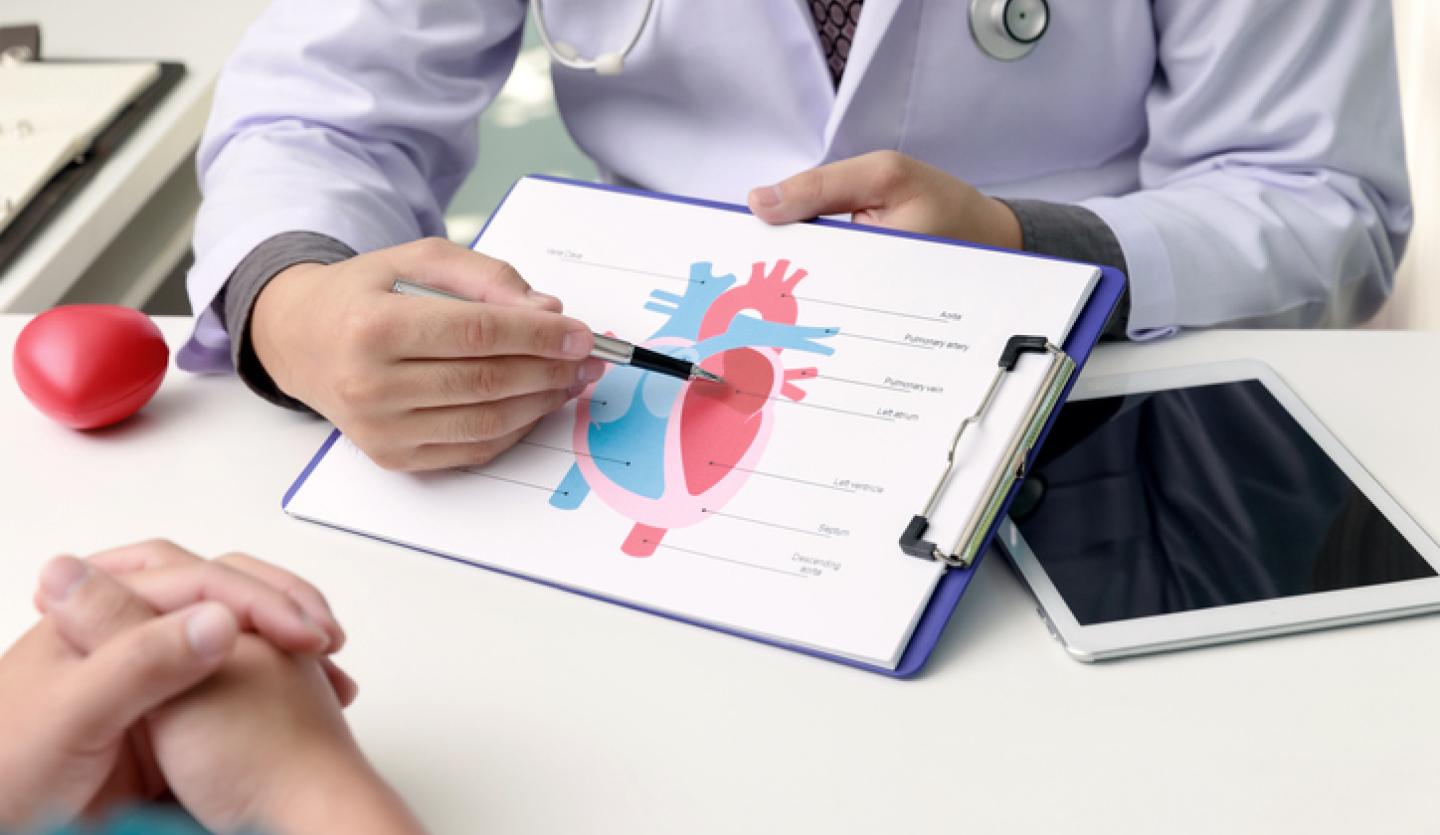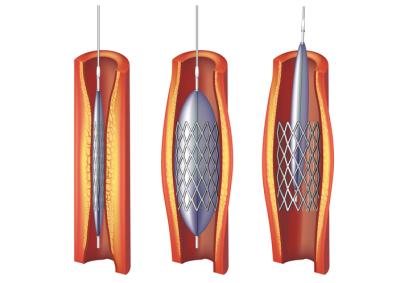Thomas Pappas, MD, Director of St. Francis Heart Center's Cardiac Catheterization Lab, answers commonly asked questions about coronary angioplasty offered at St. Francis Heart Center locations across Long Island.
Q. What is a coronary angioplasty procedure?
Coronary angioplasty is a minimally invasive procedure that opens one or more coronary arteries blocked by plaque, thereby improving blood flow into the heart muscle. Trained, accredited interventional cardiologists perform it.
Coronary angioplasty is an alternative to more invasive open-heart bypass surgery that approaches the heart either from the wrist or groin without making a large incision. A plastic tube is advanced into the heart’s arteries, allowing a small balloon or other device to open a blockage within the artery. Once the artery opens, a metal stent is inserted into the artery to ensure that the artery remains open, which allows the restoration of blood flow to the heart.
You may hear other names used for coronary angioplasty, such as:
- Balloon angioplasty
- Coronary artery stenting
- Percutaneous coronary intervention (PCI)
- Percutaneous transluminal coronary angioplasty (PTCA)
Coronary angioplasty procedures occur in a hospital cardiac catheterization laboratory (cath lab) either electively as an outpatient or urgently as an inpatient.
Q. Who needs coronary angioplasty?
Angioplasty is commonly used to treat atherosclerosis—plaque (fatty deposits) made of fat and cholesterol—in your arteries that lead to coronary artery disease (CAD) or a heart attack.
If you have coronary artery disease, the plaque has built up and blocked the artery, not allowing the heart to receive enough blood, oxygen and nutrients. These dangerous blockages, if left untreated, can cause a heart attack or myocardial infarction. It can also cause heart failure or other serious cardiac conditions.
Coronary angioplasty removes the plaque, immediately improving blood flow, and widens the coronary arteries to prevent future damage to the heart muscle.
Heart-healthy habits are essential. You can reduce plaque in your arteries with diet, lifestyle modifications or certain medications that reduce the amount of plaque in your arteries. For some people, however, the plaque has reached dangerous levels that require coronary angioplasty.
Q. How can I prepare for a coronary angioplasty?
Before a scheduled coronary angioplasty, we ask patients to get a blood test, ECG (electrocardiogram) or chest x-ray. We may also request an angiogram, a test that sends dye into your arteries to help your interventional cardiologist see blockages more easily during the procedure. The angiogram and angioplasty may occur at the same time.
You must stop eating or drinking a few hours before the procedure and stop taking certain medications. During the procedure, which can take up to a few hours, sedation medication will help you relax and relieve pain.
Q. What should I expect after coronary angioplasty?
Post-care after coronary angioplasty will depend upon why you had the procedure. Patients who had a scheduled procedure may be able to go home the same day. For patients who had coronary angioplasty for a heart attack, they will need to stay in the hospital longer for observation.
For all patients after coronary angioplasty, you will get instructions about how to keep the area bandaged, restrict movement for some activities, and take prescription blood-thinning medication to prevent blood clots. You will also receive instructions on watching for signs of an infection, such as if the area is abnormally warm to the touch and if you have pain, redness or swelling.
Q. What are the risks of having a coronary angioplasty?
Any invasive procedure comes with risks. Your doctor will review potential risks, such as:
- Allergic reaction to the dye
- Bleeding from the incision site
- Blood clots
- Damage to blood vessels
- Infection
- Irregular heartbeat
- Stroke
Q. Why should I choose St. Francis Heart Center for coronary angioplasty?
St. Francis Heart Center is nationally recognized for its technologies and procedures, making it an unparalleled leader in cardiovascular services.
Our award-winning interventional cardiologists improve the outcome of angioplasty by using 3D imaging to place the stent as accurately as possible. With 3D imaging, we can customize the length and diameter of the stent to the exact millimeter. 3D imaging sets St. Francis Heart Center apart from the more commonly performed 2D intravascular imaging that estimates the placement and length of each stent.
With St. Francis Heart Center locations in Nassau and Suffolk counties, and as we expand to new locations, more Long Islanders now have convenient access to the highest level of cardiac care. We offer coronary angioplasty at:
- St. Francis Heart Center at Good Samaritan University Hospital (West Islip, NY)
- St. Francis Heart Center at Mercy Hospital (Rockville Centre, NY)
- St. Francis Heart Center at St. Catherine of Siena Hospital (Smithtown, NY)
- St. Francis Heart Center at St. Joseph Hospital (Bethpage, NY)
St. Francis Heart Center cardiology services are also available at:
- Catholic Health Ambulatory Care at Centereach
- Catholic Health Ambulatory Care at Commack
- Catholic Health Ambulatory Care at East Hills
- Catholic Health Ambulatory Care at Lake Success
- Catholic Health Ambulatory Care at Patchogue
- Catholic Health Ambulatory Care at Riverhead
- Catholic Health Ambulatory Care at West Babylon








